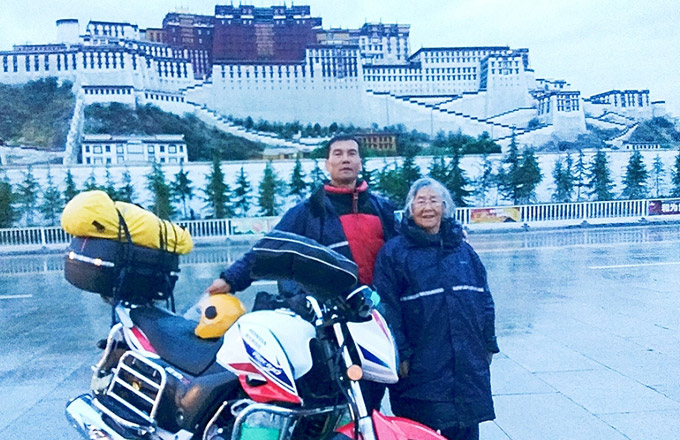Project to restore heritage proves a winner
When you go to see ancient architecture in China the chances are you may only be admiring concrete imitations. Not at Beijing's Temple Hotel.
Behind the heavy wooden doors, a 600-year-old shrine stands along with political slogans from the "cultural revolution" (1966-76). Modern art adorns ancient walls and customers dine elegantly in a set remodeled from 1970s factories.
The hotel is the only winner in China this year in the UNESCO Asia-Pacific Awards for Cultural Heritage Conservation, in which 43 projects from 11 countries competed in eight categories.
The award recognizes the efforts of private initiatives in restoring and conserving architecture with heritage value in the region. Previous winners include Cichen Town in Zhejiang province and 796 Huaihai Road in Shanghai.
"The renovation has not only restored the storied past of the place, but also extended its life," Abhimanyu Singh, director and representative of UNESCO's Beijing Office, said as he presented the award in late May.
A deserted complex five years ago, the Temple Hotel in Dongcheng district is now a mix of restaurant, art gallery and hotel that receives more than 3,000 visitors a month. It regularly hosts free art exhibitions, as well as workshops with renowned writers as a way to "connect to its past as an imperial publishing house".
Juan van Wassenhove, co-founder of the Temple Hotel, said, "We also want to introduce master classes with great musicians, because the acoustics are amazing."
US lighting artist James Turrell dedicated his China debut to the hotel, which features installations by Beijing artist Wang Shugang.
Built in the 15th century, the Zhizhu Temple (the Temple of Wisdom) complex, where the Temple Hotel is situated, served successively as an imperial publishing house for Buddhist scriptures, a Buddhist temple and a Lama temple.
After the founding of the People's Republic of China in 1949, Zhizhu Temple was converted to a residential complex and later a television factory. In the 1960s, a huge fire damaged the northwestern corner of the complex and the main hall.
The buildings lay deserted until 2007, when the site was discovered by Van Wassenhove and his Chinese partners Lin Fan and Li Chow.
A banker with JPMorgan for many years, Van Wassenhove has always harbored a passion for art and architecture. The three all felt the urge to do something for the city they have chosen to live in.
"As we walked by chance into the Zhizhu Temple, my partners and I, under the overwhelming decay, could see beautiful remains of wooden architecture awaiting careful and authentic restoration," Van Wassenhove said.
For the next five years, the trio worked with carpenters and painting restorers from Nanjing, construction workers in Beijing and master designers from the US to renovate the complex.
A total of 400 truckloads of debris was removed, 43,000 roof tiles cleaned and replaced by hand, and 70 painted wooden panels restored — each beam being measured precisely to identify the degree of damage and to ensure that no old material was wasted.
"We tried our best to preserve the originality of the place. We really wanted to apply this concept of ‘restore the old as old' and to respect the layers of history," Van Wassenhove said. "It's not always reasonable in terms of cost, but this is a way of respecting the city."
In the end, the shrines, factory mill and political graffiti were all preserved.
"It's part of the history. We consider ourselves as guardians of this place. We are here to preserve, not to judge," Van Wassenhove said.
Beijing architectural historian Cui Jinze said the Temple Hotel project could provide the inspiration for architectural renovation in China.
"The example of the Temple Hotel shows it is technically possible to preserve the original nature of Chinese wooden architecture," Cui said.
It is also a good illustration of how a cultural relic can serve both commercial and public purposes, Cui added.
"There are many restaurants at cultural relics in China that don't allow public visits. Among the cases I have investigated in the country, Zhizhu Temple is the best example in terms of architectural preservation, business operation and public interest. Business is not necessarily a bad thing, as it goes hand in hand with the promotion of culture."
Van Wassenhove attributes the success of the project to his Chinese peers.
"When talking about China, people think of cheap products, but we want to prove that Chinese excellence exists. For this place, nothing would have been possible without these Chinese carpenters, masons, painting restorers and private sponsors," he said.

























